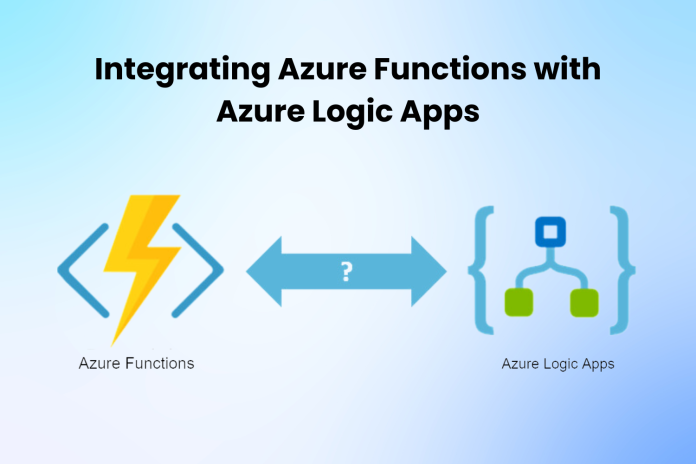Microsoft Azure is a major player in cloud computing, providing services to improve and optimise a range of business processes. Azure Functions and Azure Logic Apps are two of the more potent accessible tools. Combined, they make a dynamic pair that can easily orchestrate intricate workflows.
In this blog, we will explore the integration of Azure Logic Apps with Azure Functions and reveal the benefits of merging these two powerful technologies. If you’re new to Microsoft Azure Training or a seasoned cloud user, knowing how Microsoft Azure Functions and Logic Apps work together can open up a world of possibilities.
Table of Contents
- What are Microsoft Azure Functions?
- The Power of Event-Driven Computing
- Azure Logic Apps
- Bridging the Divide with Azure Logic Apps
- Integrating Azure Functions with Azure Logic Apps
- Seamless Integration
- Triggering Actions
- Microsoft Azure Functions Training
- Embracing Continuous Learning
- Conclusion
What are Microsoft Azure Functions?
Before starting the integration process, let’s pause to recognise the unique strengths of Microsoft Azure Functions. Azure Functions, a serverless computing tool, makes it simple for developers to create and implement scalable applications. Because of its event-driven architecture, which makes sure that operations are carried out in response to predetermined triggers, ongoing server maintenance is not required.
The Power of Event-Driven Computing
Knowing the subtleties of Microsoft Azure functionalities becomes essential when working in cloud computing. With Azure Functions, developers can create code that reacts to various events, including messages from other Azure services, incoming HTTP requests, and data changes. Unmatched flexibility is provided by the ability to run code in a serverless environment, enabling quick development and deployment without the headaches of infrastructure administration.
Understanding Azure Functions in-depth as you progress through Microsoft Azure courses is essential to realising the full potential of this marvel of cloud computing.
Azure Logic Apps
After familiarising ourselves with Azure Functions, let us now discuss Azure Logic Apps. Presented as a solution for streamlining processes, Azure Logic Apps offer a graphical interface for coordinating and merging different services from within and outside of the Microsoft network.
Bridging the Divide with Azure Logic Apps
Azure Logic Apps is a shining example of efficiency in cloud orchestration. Users are empowered to construct workflows that smoothly connect various systems and services because of their user-friendly design interface. For companies looking to automate tasks more efficiently, Azure Logic Apps’ visual workflow designer facilitates the orchestration of intricate operations.
When you begin your Microsoft Azure course, visualise Azure Logic Apps as your conductor, skilfully and precisely orchestrating tasks.
Integrating Azure Functions with Azure Logic Apps
Let’s now explore the magic that occurs during the integration of Azure Logic Apps with Azure Functions. A harmonious cloud computing experience is the outcome of this symbiotic relationship created by the strengths of each service complementing each other.
Seamless Integration
With their microservices architecture, Azure Functions fit well with Azure Logic Apps, acting as the fundamental pieces of complex workflows. Logic Apps can easily call these functions, enabling the completion of particular tasks as part of a larger automated process. Because each function focuses on a single task, this modular approach streamlines development and makes the workflow more manageable.
Triggering Actions
Consider Azure Logic Apps as an orchestra conductor in charge of the whole show’s progression. Workflows become more flexible and responsive when Logic Apps activate Azure Functions in response to particular events or conditions. Thanks to the dynamic interplay between Logic Apps and Functions, your cloud-based operations will always be flexible and responsive to changing conditions.
Microsoft Azure Functions Training
As you dive deeper into integrating Azure Functions with Azure Logic Apps, remember the need for ongoing education. Training on Microsoft Azure services becomes a valuable resource, offering insights into best practices, ideal use cases, and the most recent developments in the constantly changing Azure ecosystem.
Embracing Continuous Learning
It’s essential to keep up with the latest developments in cloud computing. Training in Microsoft Azure functions gives people the know-how and abilities they need to fully utilise Azure Functions in the context of Logic Apps. Continuous learning ensures you stay ahead of the curve, regardless of your level of experience as a developer or your interest in learning about Microsoft Azure for the first time.
Conclusion
To sum up, the combination of Azure Functions and Azure Logic Apps creates a cloud computing symphony of efficiency. Discovering how to combine the power of Azure Functions and Logic Apps opens new opportunities for task orchestration, workflow automation, and business process optimisation as you navigate the terrain of Microsoft Azure training.
Azure Logic Apps’ orchestration of Azure Functions produces a responsive and dynamic cloud computing environment in which every element is essential to efficiently completing activities. Understanding and being an expert at integrating Azure Functions with Azure Logic Apps is a crucial skill set that will help you succeed in the rapidly changing field of cloud computing as more and more enterprises realise the potential of the cloud. For more information visit: The Knowledge Academy.

